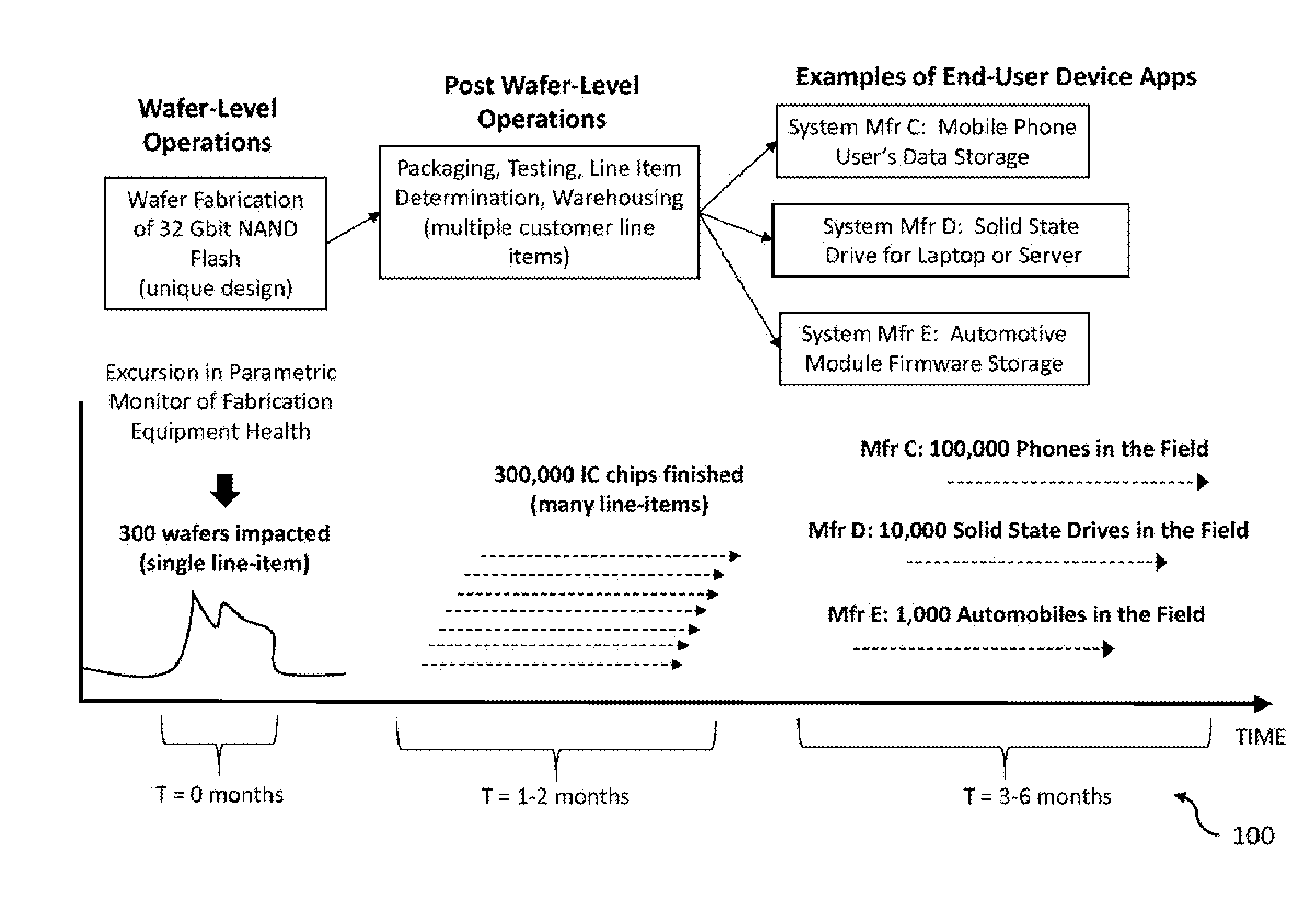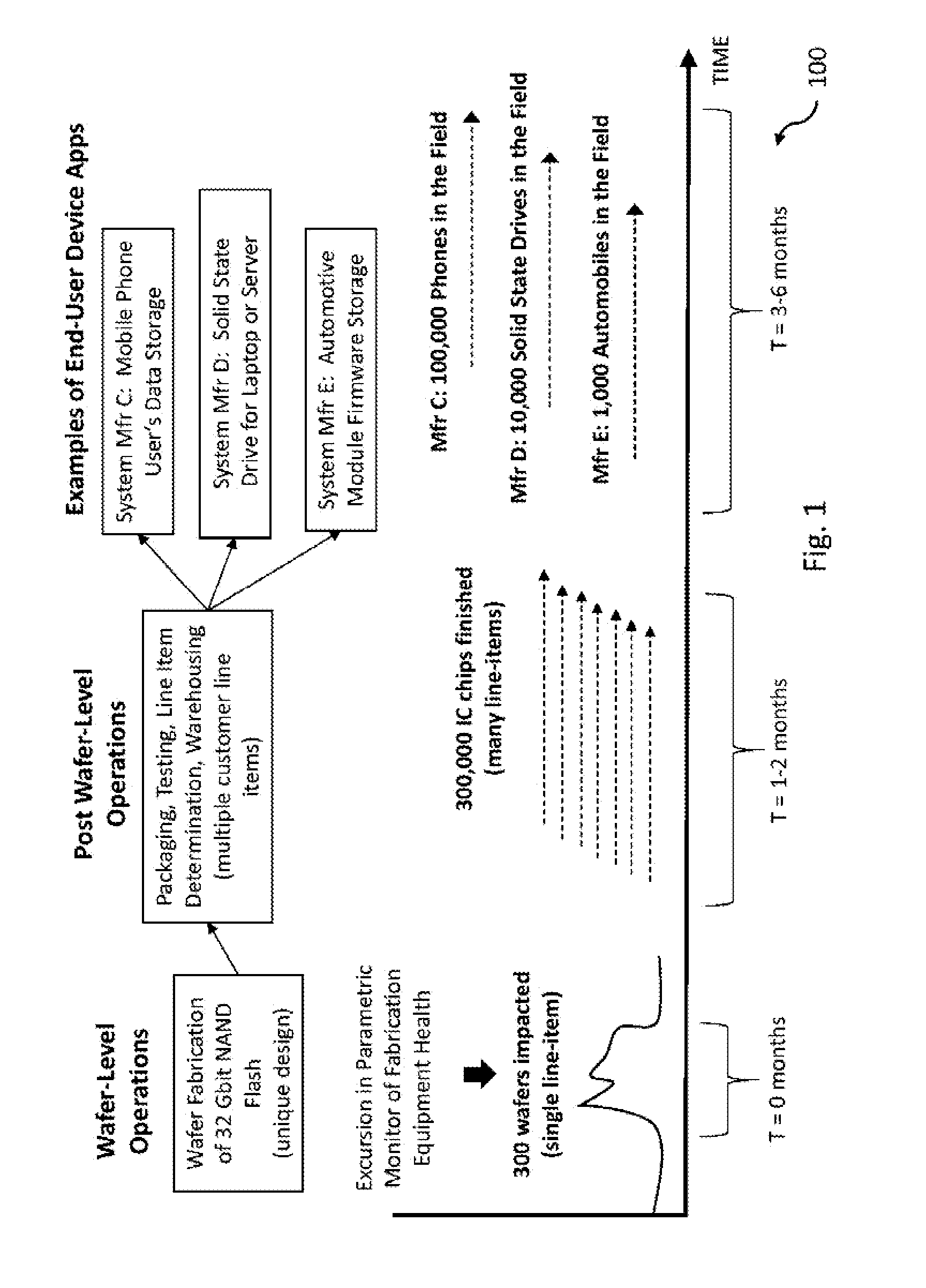Correlation between manufacturing segment and end- user device performance
a technology of end-user devices and manufacturing segments, applied in the field of electronic devices, can solve the problems of airbag deployment, failure of many types of manufactured end-user devices containing electronics, and failure of many types of end-user devices
- Summary
- Abstract
- Description
- Claims
- Application Information
AI Technical Summary
Benefits of technology
Problems solved by technology
Method used
Image
Examples
Embodiment Construction
[0062]It may be in the best interest of both end-user device manufacturer(s) and the manufacturer(s) of electronic modules and components included in the devices to adopt methods to minimize the impact of problems in device performance. Some embodiments of the current subject matter present a systematic approach for analyzing data from the manufacturing of electronic elements (including electronic modules and / or electronic components) and in-field data for devices of end-users that include these elements.
[0063]In some embodiments, problems suspected or actually identified in the electronics manufacturing process may be used to determine if these problems have actually affected responses exhibited in data generated by end-user devices in the field. Additionally or alternatively such problems may be used in some embodiments to anticipate and / or delineate the scope of potentially related responses exhibited in data generated by end-user devices in the field, as opposed to relying on in...
PUM
 Login to View More
Login to View More Abstract
Description
Claims
Application Information
 Login to View More
Login to View More - R&D
- Intellectual Property
- Life Sciences
- Materials
- Tech Scout
- Unparalleled Data Quality
- Higher Quality Content
- 60% Fewer Hallucinations
Browse by: Latest US Patents, China's latest patents, Technical Efficacy Thesaurus, Application Domain, Technology Topic, Popular Technical Reports.
© 2025 PatSnap. All rights reserved.Legal|Privacy policy|Modern Slavery Act Transparency Statement|Sitemap|About US| Contact US: help@patsnap.com



